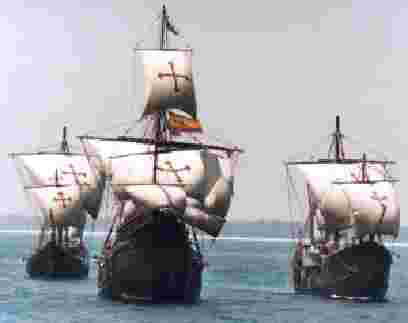
Sarsfield needed to learn the centuries-old ship building process called Mediterranean Whole Molding. In 1988, the Foundation hired John Patrick Sarsfield, an American engineer, maritime historian and expert on Portuguese caravels, to design and construct a replica of the Niña. The Niña, Columbus’ personal favorite, was the first to be completed and represents the most historically accurate replica of a Columbus ship ever built. Smaller replicas are displayed in museums worldwide, but a number of years ago, two full-size ships were built to fulfill a unique mission.ĭecades ago, the Columbus Foundation of the British Virgin Islands, was organized with the objective of raising money to fund the construction of the three ships to recreate the most famous trio of sailing ships in the world. Replicas of the ships constructed over the years help us envision the remarkable journey of Columbus and his sailors as they crossed the vast ocean in three small ships. A photograph of a replica of one of Columbus’ three ships, the three-masted caravel, Pinta.The Niña, the Pinta and the Santa Maria are synonymous with the first voyage of Columbus. It’s unknown if the Niña and the Pinta, which were smaller caravels, ever returned to the New World after their voyage home, or if they sailed elsewhere. Columbus ordered it stripped, using its timbers to construct a village he named La Navidad.

The largest of Columbus’s fleet, the 150-ton vessel grounded in present-day Haiti on Christmas Day, 1492. Only the fate of the Santa Maria is known. 12, 1492, ending the pre-Columbian era in the New World. The 15th century explorer landed in the present-day Bahamas on Oct.

“Ships lost in cold, dark, deep water have a much better chance of staying intact and maintaining their ‘time capsule’ value,” he said. Bettmann ArchiveĪnd 500 years of hurricanes would be no friend to a beached hulk, either archaeologist Donald Keith told the magazine. A chromolithograph by Louis Prang and Company. If Columbus’ ships sunk in a region like the Caribbean, they would have easily been consumed by a species of wood-eating mollusk, known as “termites of the sea,” the magazine reported. No one knows whether the vessels, two of which eventually returned to Europe, ended up, if they even survived or were eventually wrecked. 12, 1492, ending the pre-Columbian era in the New World.ĭespite being the find of a lifetime for curious archaeologists and shipwreck chasers - the three ocean-going sailing ships have never been found, according to National Geographic. More than half a millennium after Christopher Columbus sailed the ocean blue, the physical remains of his three ships - the Niña, the Pinta, and the Santa Maria - remain lost to history. We must rescue America’s heroes from those who tear them down Vandals spray-paint ‘Murderer’ on Central Park Columbus statue Photos show pair who scrawled ‘Murderer’ on Christopher Columbus statue: NYPD Vikings were in the Americas 500 years before Christopher Columbus: study


 0 kommentar(er)
0 kommentar(er)
